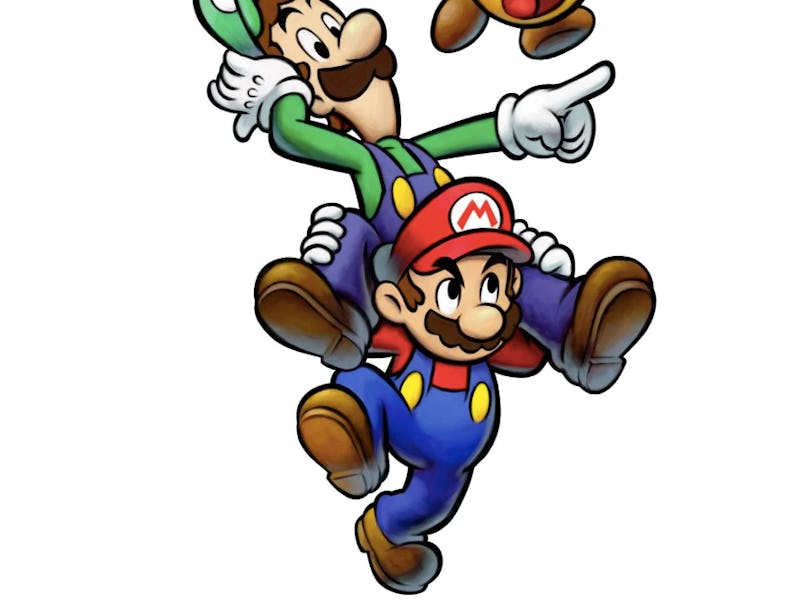5 Years Ago, Nintendo Broke the Most Important Mario Rule
And redefined a classic character in the process.

Look, friends, there are a lot of RPGs out there. So many, in fact, that it’s difficult to stand out amongst the rest of the pack. Whether it be the longstanding Final Fantasy franchise or the Elder Scrolls and Fallout juggernauts from Bethesda studios, choosing the appropriate realm of RPGs to dive into is not for the faint of heart. Mario & Luigi: Bowser’s Inside Story is a dark horse candidate, not for how it embodies the classical, hardcore RPG mold, but because of how it subverts expectations with its uncanny sense of humor and genuine joy protruding from every nook and cranny of the experience.
Developed by the now-defunct AlphaDream and originally released for the Nintendo DS in 2009, Bowser’s Inside Story was the third game in the developer’s Mario & Luigi series that first started on the Gameboy Advance in 2003. Best described as an action-RPG, this particular title stood out thanks to its large focus on Bowser — not just for the story or myriad of comedic possibilities, but for the gameplay, too.
That’s right; this is the rare Mario title where the Koopa King is fully playable. And it’s an absolute fire-breathing blast. Whereas the Mario brothers are precision instruments that must effectively dodge and execute special moves, Bowser was just a tank — like going from playing as Captain America to the Hulk. There’s some obvious humor in just that simple gameplay addition, but the general zany premise of Bowser’s Inside Story should be enough to convince anyone to give it a shot.
This is the rare Mario title where the Koopa King is fully playable.
The game starts with a disease called Blorbs, which has infected the Mushroom Kingdom and turns its citizens into very large goobers rolling around uncontrollably. Not enough? After being thwarted by the Mario Bros. from kidnapping Princess Peach yet again, Bowser is tricked by Fawful — the nemesis from Superstar Saga, the first game in the series — into eating a “vacuum shroom.” Bowser uses said shroom to become something along the lines of Kirby on steroids and inhaling everything in sight, including the Mario Bros. and Peach, where they turn microscopic inside Bowser's stomach and must find a way out while Bowser must face demons of his own.
That’s right. Bowser’s Inside Story is funny enough even when simply observing the story premise (or, heck, just the game’s literal title). There’s a stark contrast from previous games — like Partners in Time revolving around an alien armada invading from the past, with plenty of dead (though I’m sure Nintendo will say they were just knocked out) toads seen scattered throughout — compared to this, where it’s ostensibly about Bowser having a tummy ache. Absolute genius.
But the fun doesn’t stop there. Bowser’s Inside Story excels with its humor in both the dialogue and gameplay. The comedic potential of Mario and Luigi is constant, mostly heightened by the characters not actually speaking any lines of dialogue and relying on silly gestures. Luigi’s constant fear of literally anything is a classic bit at its absolute apex here, especially given the many weird enemy encounters you’ll come across given the whole Stuck-in-Bowser’s-Tummy thing.
The game is complete with all matter of enemy types, from angry caterpillar slug monsters to digital copies of the Bros. generated from Bowser’s memories. The conceptualizing of different scenarios and enemies is on point throughout, and the writing excels with little cute lines like Bowser’s longtime assistantKamek going “What’s wrong, your Queasiness???” after Bowser eats a crummy mushroom. There’s even a sentient question mark block that speaks French for some reason? Cinema, I tell you.
With such masterful humor, though, Bowser’s Inside Story doesn’t compromise too much on gameplay. You’ll equip new gear, unlock new moves, and slowly learn how to execute said moves and memorize enemy attack patterns. It’s not a deep in-the-weeds system, but rather one that is about mastering techniques from a skill standpoint. It’s a great synthesis of action with RPG elements, one might say, and doesn’t go too far in either direction.
The special moves are the highlight and they can be quite funny. Some are as fun to master as they are to look at. For instance, there’s the Snack Basket, a move where you must guide Luigi to consume as many sweets as possible to turn him into a giant blob that Mario then throws on top of the enemy like he’s a Spirit Bomb. All of these elements add up to an experience that works as a sort of “starter” RPG that makes joy the priority. And it’s yet again another title on the long-line of Mario’s seamless forays into other genres.
With such masterful humor, Bowser’s Inside Story doesn’t compromise too much on gameplay.
Mario & Luigi: Bowser’s Inside Story isn’t the only RPG to be largely predicated on its humor (the South Park games may like a word), but it might be one of the most unexpected. It’s a tremendous shame that AlphaDream shuttered, as it feels as though they never received quite enough credit for their Mario & Luigi RPG series. If it were made today, I could see constant praise and even funny out-of-context screenshots of the game’s dialogue or character movements used as reaction images. Bowser’s Inside Story was not just AlphaDream’s magnum opus, but perhaps the peak of comedy in the entire RPG genre.